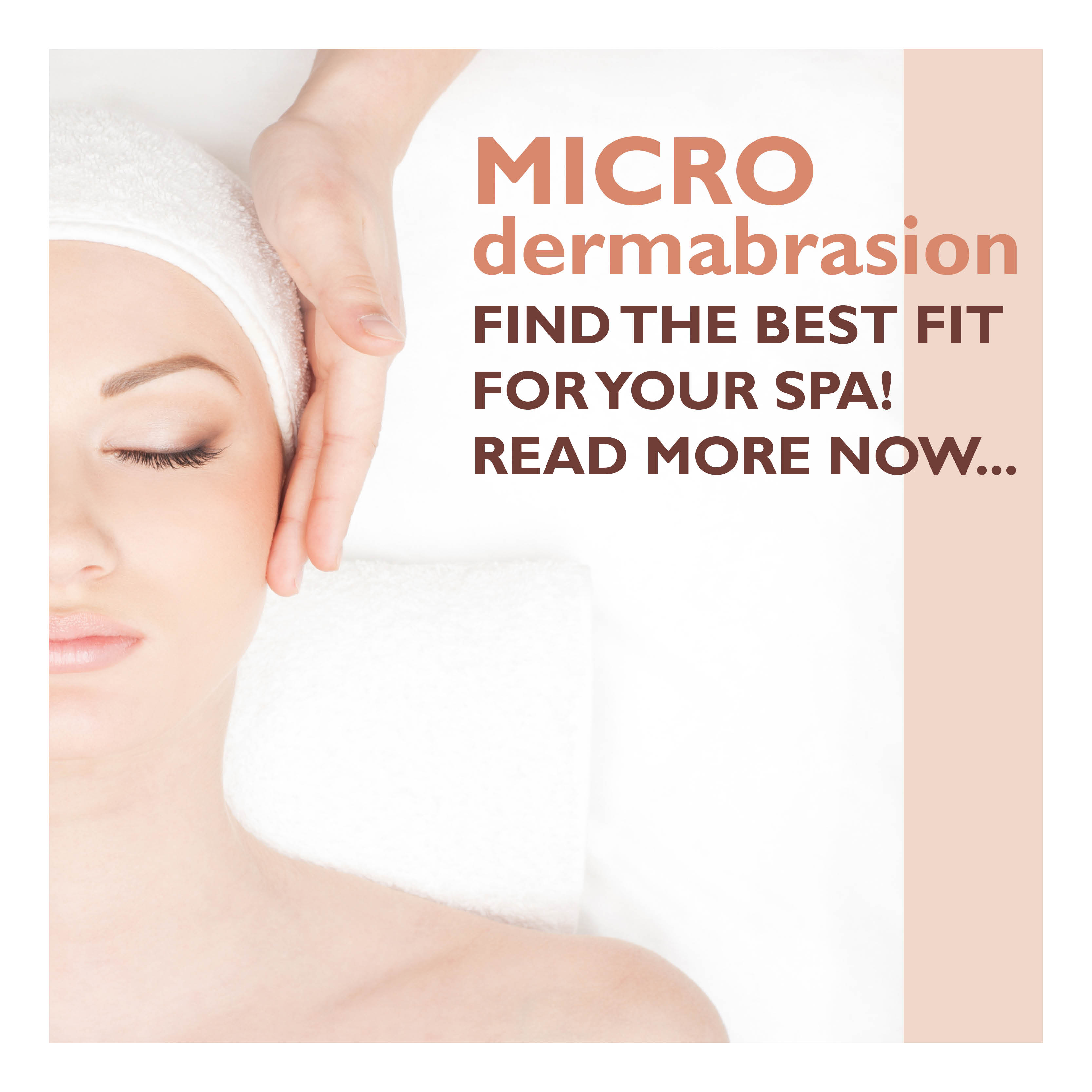What to look for in a Microdermabrasion Machine.
I am sure most have heard the term «microdermabrasion». For most professionals they begin by following the advice of their esthetic or cosmetology school recommendations. It is generally their first introduction. Most schools provide the experience of «Diamond Microdermabrasion» experience. There are many reasons. Here are a few:
- Most instructors like the simplicity of teaching diamond microdermabrasion. It is more of a preference and most school directors rely on their instructors for advice and direction.
- Most schools have a fast paced curriculum so they use the simple approach and choose diamond.
That is the gist of why diamond microdermabrasion is still in schools. Unfortuantely, some students are uncertain when trying to learn other various microdermabrasion machines. Fortunately for students they look for education beyond the school environment and seek additional education to prepare them for a real world esthetic experience.
So I wanted to take the opportunity to break it down. Also, I included microdermabrasion skin treatment protocols below, beginners, intermediate, and advanced with a step by step guideline to follow.
Let’s break it down: 4-microdermabrasion methods, materials.
- Diamond: Note diamond tips have changed and evolved to a soft metal alloy mixture. It is a bit like using sand-paper. Therefore we classify diamond tips as a «Surface Exfoliation». You have 9-different grit tips from 240 – 120 grit. It is extremely important that the application is smooth without pulling or tugging the skin. If it is not smoothly performed it can cause red striping, or cause demarcation lines with variation of pigmentation. Professionals must use caution when performing diamond microdermabrasion on darker complexions, it may cause scarring and deep pigmented lines.
- Liquid: The theory is to use water with a formulated solution to soften the the skin by swelling the dead skin cells to dissolve and slough the surface of the skin. It is a good theory, and it is a nice add on and considered a «Surface Exfoliation». The effects can be temporary if you do not combine it with a therapeutic action product or device.
- Sodium Bicarbonate, Natural Grains, Sea-Salt: Mainly used for polishing. Most are promoted for sensitive, darker skin complexions, or fragile skin. However, professionals may want to set their vacuum on a lower setting if performing a second pass with one of the polishing materials. Also if the skin has deep lines, wrinkles or scarring it might not be enough to use polishing materials to create long-term change. This is also a «Surface Exfoliation».
- Crystals: The diehard of all materials. In the 90’s the grit size were varied, from 60 grit, 100 grit, 120 grit, or 150 grit. The lower the grit the more abrasive, therefore crystals are more inclined to be noted as a therapeutic action. In the late 90’s and early 2000’s the beauty industry agreed for the best abrasive material was the 120 grit. It still provides a therapeutic-action but without the additional trauma that contributes to pigmented lesions, loss of pigment, red striping, or pin-point bleeding. In fact, starting in the 2000’s microdermabrasion companies started doing away with the extra peddle, for the boost of vacuum that lead to creating more pinpoint bleeding that ended up being only a 5-10% improvement of acne scarring. However, the medical and beauty industry introduced LASERs as an adjunct to the crystal microdermabrasion. Crystal machines are a «Therapeutic Exfoliation». It is an inert material that has more of an effect on the deeper levels of the skin’s cellular regeneration.
How can you use them together?
Firstly, it is the responsibility of the professional to assess and determine how to build one type of microdermabrasion with another. Typically, this is the line up when using different methods of microdermabrasion.
- Use #4 Crystals, 1-pass over face, neck, and chest. Overlap 20-30% with each pass. Perform using an one-direction pattern.
- Use the above #1, #2, or #3 when adding a surface exfoliation as an additional pass. Lower the vacuum for the second pass, always. At least by 2-3 inches/Hg.
3-microdermabrasion treatment protocols (simple, intermediate, and advanced).
Simple Microdermabrasion Treatment Protocol Guide (simple, but effective for new clients to microdermabrasion)
Intermediate Microdermabrasion Treatment Protocol Guide (improve hyperpigmentation safely and effectively) immediate skin results after the first treatment.
Advanced Microdermabrasion Treatment Protocol Guide (be creative, improve skin texture, clarity, and appearance with this advanced treatment) don’t be afraid to add to the treatment.
This above link will be a tremendous help when learning the first pass of performing a microdermabrasion treatment.
I hope this gave you a better idea when selecting the right microdermabrasion machine. How to choose, how to incorporate, and how to create your skin treatments. Here at Skin for Life we are always here to assist you with our latest technology by answering questions to improve your skin treatment business.

Call 1.866.312.7546
Store Locator
 Español
Español Inglés
InglésCall 1.866.312.7546
 Español
Español Inglés
Inglés
